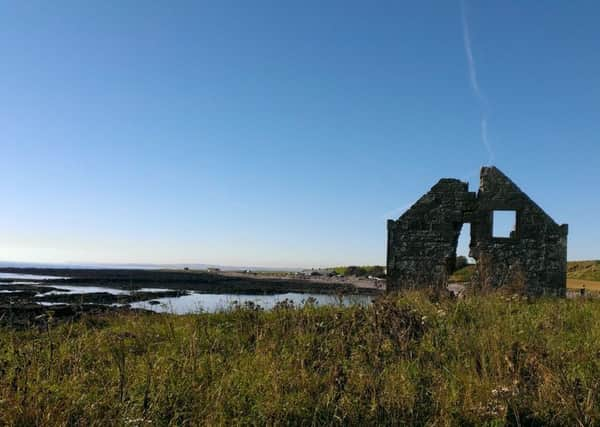The village of smugglers that was washed away


It was once a bustling coastal community populated by smugglers, lime workers and fishermen where revellers flocked twice a year for its popular four-day fair.
But all that exists now of Miltonhaven is an empty, eerie shoreline - after the entire village was washed away.
Advertisement
Hide AdIt is not clear how many people lost their lives in this key seaport, which sat between St Cyrus and Johnshaven, around 32 miles south of Aberdeen, when the waves came crashing in some time during the 1790s.
But it was the very thing behind this prosperity - the arrival of a lime kiln - which was also to secure its destruction.
Duncan Fraser, in Portrait of a Parish, described how Miltonhaven vanished after Robert Scott of Dunninald, moved in.
From a well off local family, Scott’s family had long built lime kilns to produce the fertiliser that allowed their fields to flourish.
For Scott, Miltonhaven had just what he needed to take his business to the next level.
Fraser wrote: “What first drew his attention was the limestone rock that stretched in a reef across the bay, like a natural breakwater guarding the little village from the angry sea.”
Advertisement
Hide AdIn 1750, Scott, built his kiln on the shore at Miltonhaven - and set to work on blasting the rock out of the water.
Fraser said there was “ample evidence that the people loved the lime dust” as villagers started to benefit from this new enterprise - and the results of living close to Montrose, once Scotland’s chief tobacco port.
Advertisement
Hide AdHe wrote: “The population doubled in the next few years. There was another boon too that the limekiln brought.
“All through the night from far out at sea, the red glow in the sky over Miltonhaven shone like a welcoming beacon to every ship that carried contraband.
“Soon the lime workers got involved in the smuggling and they were somewhat tougher than the fisherfolk.”
At night, the coast became too dangerous for the tidesmen to secure and the way was clear for those dealing in contraband.
As a result, Fraser added: “It brought a new wave of prosperity to Miltonhaven, with luxuries undreamt of before.
“There were chages in the drinking habits of women as well as men.
Advertisement
Hide Ad“Along with the gin and brandy from the Low Countries came tea from China and sugar from the West Indies to sweeten it.
“In Miltonhaven, not a cottage could boast of having a teapot before the lime quarry opened but now there was scarcely one where the women did not drink tea at least once a day.”
Advertisement
Hide AdFraser noted that the good times, however, started to fade as the ledge of limestone which ran infront of the shorefront houses wore “precariously thin.”
He wrote that, in the 1790s. the waves broke through and the “entire village” disappeared beneath the sea. Today it still lies submerged well over a hundred yards offshore.”
There is however, as Fraser recorded, a disparity over when the village was destroyed.
An article in the Geological Journal said the sea moved 150 yards inland one night in 1795.
However, an account from a St Cyrus schoolmaster said the village did not disappear in a single night, but was swept away bit by bit following a storm in 1792.
What is known is that Miltonhaven, once a boom town of the north east coast at hot bed of smuggling and trade, does not exist any more.
It is thought all that remains is just one derelict cottage on the beach, later used as a salmon bothy, which stands ruined over the waters that claimed so much.